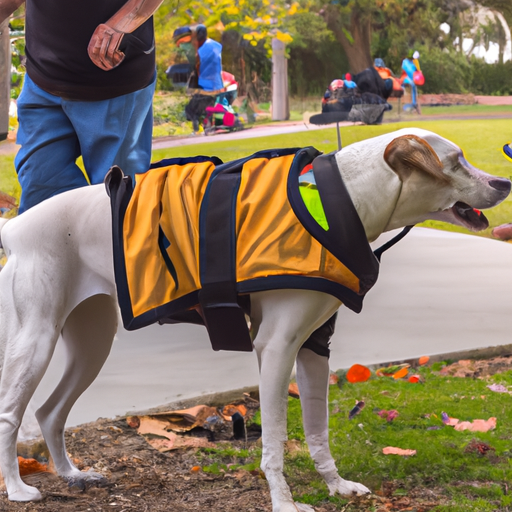1. Introduction
You might have seen a service dog assisting an individual in public and marveled at the incredible bond and dedication between the pair. As a caregiver, you probably have wondered, “What exactly do service dogs do?”
Service dogs are more than just companions; they are trained to perform specific tasks that assist people with disabilities. Their roles are as diverse as the needs of the individuals they serve. This piece will delve into the fascinating world of service dogs, shedding light on their roles, training, and impact on their handler’s lives.
2. The Roles of Service Dogs
Service dogs come in all shapes and sizes, each trained for a unique purpose. Here are some of the most common roles:
- Guide Dogs: These dogs assist people who are visually impaired. They are trained to navigate obstacles and lead their handler safely.
- Hearing Dogs: For individuals who are deaf or hard of hearing, these dogs alert them to specific sounds such as doorbells, alarms, or crying babies.
- Mobility Assistance Dogs: They help people with physical disabilities by performing tasks like opening doors, picking up items, or even helping with balance.
- Diabetic Alert Dogs: These dogs can detect changes in blood sugar levels and alert their handler or another caregiver.
- Psychiatric Service Dogs: They assist individuals with mental health disorders by performing tasks that alleviate their symptoms.
Let’s look at a simple table breakdown of these roles.
| Type of Service Dog | Primary Role |
|---|---|
| Guide Dogs | Aid for the visually impaired |
| Hearing Dogs | Alert to specific sounds |
| Mobility Assistance Dogs | Assist with physical tasks |
| Diabetic Alert Dogs | Monitor blood sugar levels |
| Psychiatric Service Dogs | Support mental health |
3. The Training of Service Dogs
Training a service dog requires time, patience, and expertise. This process can take up to two years, focusing on obedience, task-specific training, and public access skills. Importantly, these dogs are trained to remain calm and focused, especially in crowded or stressful environments.
Here’s a typical training breakdown:
- Basic obedience training
- Socialization skills
- Specific task training
- Public access training
4. The Impact of Service Dogs
The impact of a service dog on the life of an individual with disabilities is immeasurable. These dogs provide independence, security, and companionship. They are not just pets; they are life-changing partners. As a caregiver, you’ll witness the transformative power of these dogs in improving the quality of life and overall well-being of those they serve.
5. Frequently Asked Questions (FAQs)
Q: Can any dog become a service dog?
A: Not all dogs have the temperament or ability to become a service dog. It requires specific traits, such as good health, calm demeanor, and high trainability.
Q: How much does a service dog cost?
A: The cost can vary greatly, but it generally ranges from $15,000 to $30,000, which includes the cost of training.
Q: Can service dogs go anywhere?
Q: How can I get a service dog?
A: Contact a reputable service dog organization. They will guide you through the process, which typically involves an application, interview, and matching process.
This piece has attempted to answer the question, “What do service dogs do?” in a comprehensive way. The role of service dogs goes beyond companionship; they are trained professionals that provide invaluable assistance to individuals with disabilities. As a caregiver, understanding their roles, training, and impact can help you appreciate these extraordinary dogs even more.



